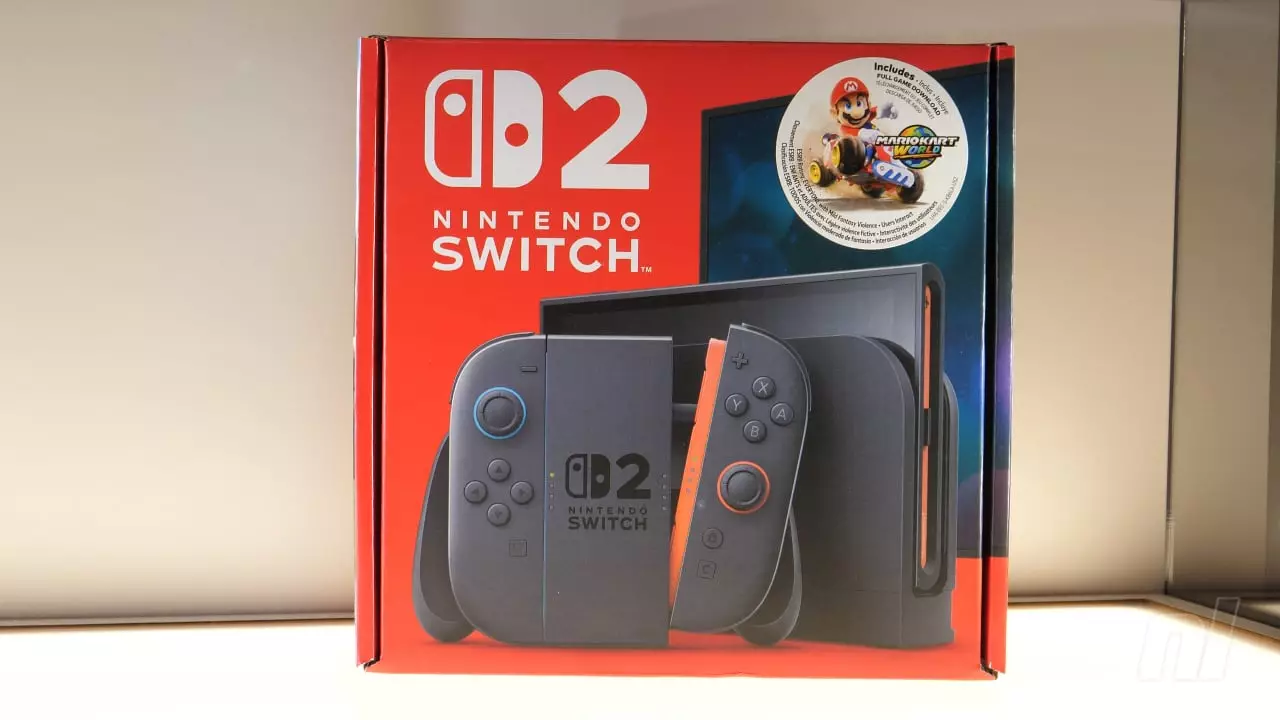Nintendo’s recent announcement regarding the prices of its forthcoming console, the Switch 2, has raised eyebrows and sparked discussions among avid gamers. Set to debut at $449.99 for the base unit and $499.99 for the Mario Kart World bundle, these prices align with expectations set during its price reveal earlier this month. What stands out, though, are the lingering uncertainties surrounding accessory pricing and the impact of fluctuating market conditions on Nintendo’s broader pricing strategy.
While Nintendo has vowed not to hike prices for its flagship games such as Mario Kart World and Donkey Kong Bananza, the company has quietly adjusted accessory prices, citing market variations. These modifications—typically $5 increases across most accessories—reflect external pressures faced by the gaming industry, particularly in a post-pandemic economy that continues to grapple with supply chain challenges and inflationary trends.
This intriguing dynamic indicates that Nintendo is navigating a complex web of consumer demand, profitability, and global economic conditions, making it evident that even staples in gaming must adapt or suffer the consequences. The company’s decision to postpone pre-orders in the U.S. and Canada, while earlier waves of orders kicked off in Europe, reflects a measured approach to market stability in light of new tariffs imposed on imports.
Constantly Changing Landscape of Video Game Accessories
For the dedicated Nintendo fan eager to enhance their gaming experience, the price adjustments for accessories add an unexpected twist to the Switch 2’s launch narrative. The new pricing structure—featuring accessory bundles that range from the Joy-Con controllers now priced at $94.99, to a Nintendo Switch 2 dock set elevating to $119.99—could be seen as a strategy to maximize profit margins amid tightening economic realities.
Through this modification, the company might anticipate a decrease in sales volume for the peripherals, which historically see robust demand. However, a $10 increase here or a $5 rise there accumulates, raising essential questions about consumer loyalty—will gamers remain committed to the ecosystem or will they seek alternatives, especially when other competitors are aggressively pricing their accessories?
Nintendo’s careful balancing act—evidence of its brand strength and consumer loyalty—necessitates keen observation. The company has managed to engender excitement with its upcoming hardware even in a landscape riddled with unpredictability. Yet, this scenario begs the question: how far can Nintendo push the limits of consumer tolerance before the laughter fades into dissatisfaction?
The Countdown to Launch and Consumer Sentiment
With the launch date of June 5, 2025, fast approaching, gamers are feeling a mix of excitement and anxiety surrounding the Switch 2. On the one hand, Nintendo’s commitment to keep core prices stable offers a respite amidst economic uncertainty; on the other, accessory increases introduce an element of skepticism concerning the overall cost of ownership.
Compounding uncertainty is the announcement regarding pre-orders, which were initially foreseen to commence shortly after the price reveal but were delayed. The company’s frequent apologies to fans, while empathetic, might inadvertently convey a sense of urgency and concern about the financial implications surrounding their new offering. As Nintendo assures its consumers of a bright future ahead, one can’t help but question whether this is the optimal strategy for maintaining trust in its fanbase.
Furthermore, the upcoming invitations from the My Nintendo Store could foster exclusivity and alleviate worries, yet there remains an apprehensive silence over how such invitations will be distributed, and who will ultimately benefit. Nintendo’s allure is built on nostalgia and community; alienating any segment of its fanbase is a risk not worth taking.
The Road Ahead: A Fan Perspective
As an avid contributor to the gaming community, it’s essential to reflect on how consumer sentiment is influenced by these pricing maneuvers. The mixed reactions surrounding increased accessory prices seem justified. It’s crucial for Nintendo to deliver not just excellent hardware but also fair pricing for gamers yearning to enter this new chapter with Switch 2. The memories forged through multiplayer moments and exhilarating gameplay should not be clouded by financial hesitations.
Indeed, while Nintendo has done well to maintain a competitive price point for its major products and flagship titles, it’s the experience, the value for money, and the cultural relevance that will shape its legacy moving forward. Despite economic turbulence, the brand thrives on innovation, and it is this very innovation that fans are eager to embrace come launch day. Only time will tell if the company can once again delight its legions without alienating them through unintended pricing missteps.


Leave a Reply